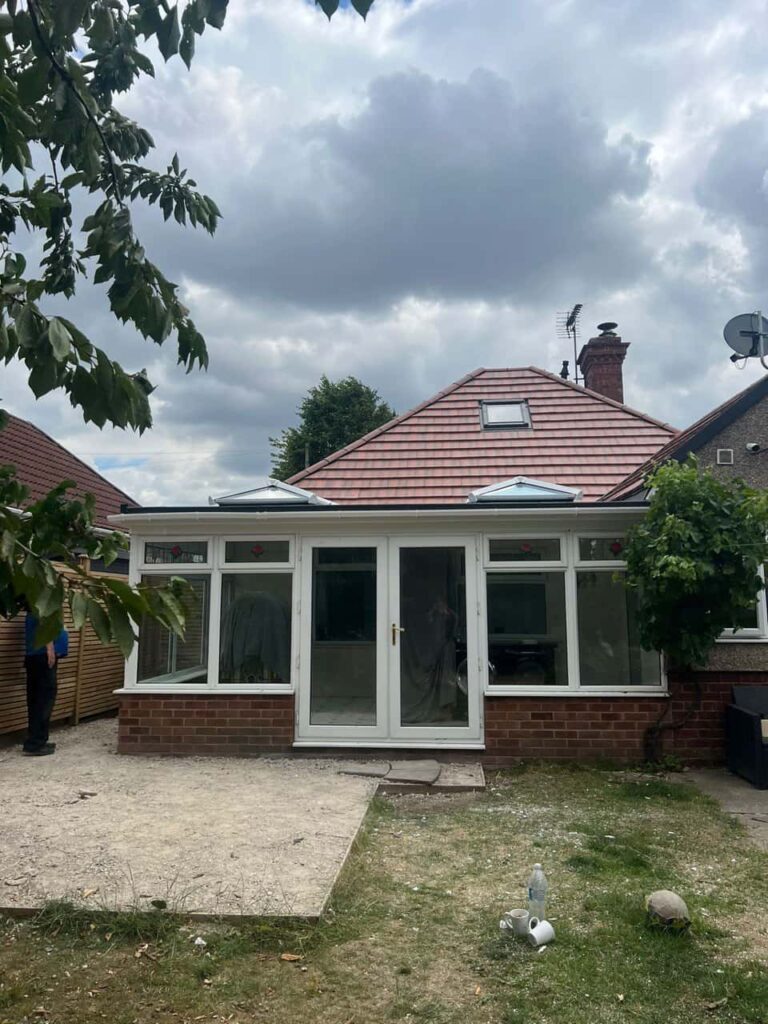A leak near your chimney can be one of the most frustrating and elusive roofing issues to deal with. The signs may appear inside—damp patches, mould growth, or peeling paint—yet tracing the source of the problem often proves far more difficult than expected. For homeowners in Hazlemere, Buckinghamshire, this is a common problem that LS Roofing Hazlemere encounters regularly.
Understanding why chimney-adjacent leaks are so difficult to trace is the first step to resolving them efficiently. Here’s what makes them such a challenge—and how professional roofers tackle them.
1. Multiple Potential Entry Points
Unlike a simple roof tile crack or broken gutter joint, chimneys are complex structures with several potential leak paths. These include:
- Cracked or degraded lead flashing
- Gaps in the mortar between bricks
- Broken or missing chimney pots
- Defective flaunching at the top
- Unsealed chimney shoulders or bases
Water may enter at one of these points and travel downwards—or sideways—making it appear the leak is coming from somewhere else entirely.
2. Flashing Failures Are Often Hidden
Chimney flashing is designed to create a watertight seal between the brickwork and roof. However, over time, even minor separation or corrosion in the lead can allow water in. These issues are rarely visible from the ground, and even a roof inspection can sometimes miss subtle flashing failures unless they’re carried out thoroughly and professionally.
In many cases, we’ve found that the flashing appears sound, but the underlay beneath it has deteriorated, allowing hidden leaks to develop behind the surface.
3. Water Tracks Along Roof Timbers
Water doesn’t always drip straight down. It can travel along timbers, insulation, or rafters before eventually showing up inside the house—sometimes metres away from where it first entered. This misdirection is particularly common with chimney-related leaks, leading to false assumptions about the actual problem area.
4. Mortar and Brickwork Issues Often Overlooked
Another commonly overlooked area is the condition of the chimney brickwork itself. Freeze-thaw cycles can cause mortar joints to crack, and bricks can become porous over time. These weaknesses let water seep in gradually, saturating the structure before the effects become visible internally. Unfortunately, because this happens so slowly, the damage is usually quite advanced by the time a homeowner spots a leak.
5. Poor Past Repairs or DIY Solutions
Previous roofing repairs around chimneys often lack the care or quality needed for long-term protection. Whether it’s incorrectly installed flashing, rushed re-pointing, or sealant used as a shortcut, these quick fixes rarely stand the test of time and can even make diagnosing the issue more complicated later on.
At LS Roofing Hazlemere, we often find ourselves undoing inadequate work before we can carry out a proper, lasting repair.
Conclusion
Chimney-adjacent leaks are notoriously deceptive. Their root causes are rarely obvious, and the symptoms can easily mislead even experienced homeowners. That’s why it’s essential to have the issue inspected by skilled professionals who understand how water behaves and how chimneys interact with the rest of the roof structure.
At LS Roofing Hazlemere, we offer thorough inspections, clear explanations, and targeted repair solutions that restore your peace of mind and protect your home from further water damage. If you suspect a leak near your chimney or have been dealing with persistent damp patches, get in touch today—we’ll help you get to the bottom of it properly.
Call us on: 01494 977 299
Click here to find out more about LS Roofing Hazlemere
Click here to complete our contact form and see how we can help with your roofing needs.

